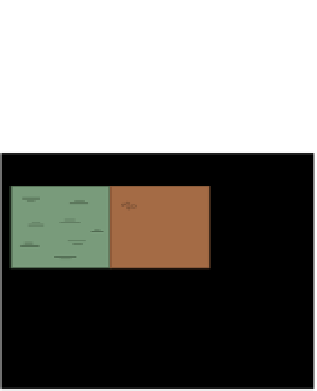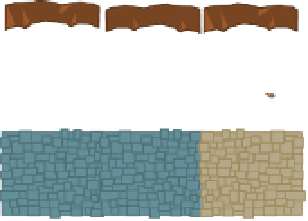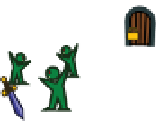Game Development Reference
In-Depth Information
FIGURe 11.6
multiple locks for a
single key with mul-
tiple keys for a single
lock
Using Abilities as Keys
Lock-and-key mechanisms are more common in games than actual locks and keys;
most lock-and-key mechanisms are characterized as something else, such as switches
or a permanent power-up that allows the player to smash down particular doors.
It is a common game design strategy to control a player's progress by granting her
permanent abilities that act as keys. For example, in a platform game, gaining
the ability to double jump allows the player to cross wider gaps and reach higher
platforms than before. Devising clever lock-and-key mechanisms that are closely
integrated to the core gameplay is an important aspect of the level designer's job.
Because gameplay is created by mechanics, you must invent locks and keys that are
based upon, or interact with, the game's core mechanics. For example, if the game
is about jumping, special jumping abilities should function as keys. If it is a game
about sword fighting, you should look for ways to create keys for special sword
fighting abilities, and so on.
One difficulty with using permanent abilities as keys is that it creates a single key
used for multiple locks. As we explained in the previous section, that type of con-
struction isn't always easy to use. If you want the player to encounter a number
of locks before finding the key, you have to be careful that you don't accidentally
create a lot of unintended shortcuts. At the same time, the player needs to be able
to clearly see that an area is locked (rather than just difficult to access). One way
to create many locks that the player passes on her way to the key is to have these
locks lead to bonus tasks and rewards that do not affect the game too much, but just
enough to feel rewarding to exploration-minded players.






















































